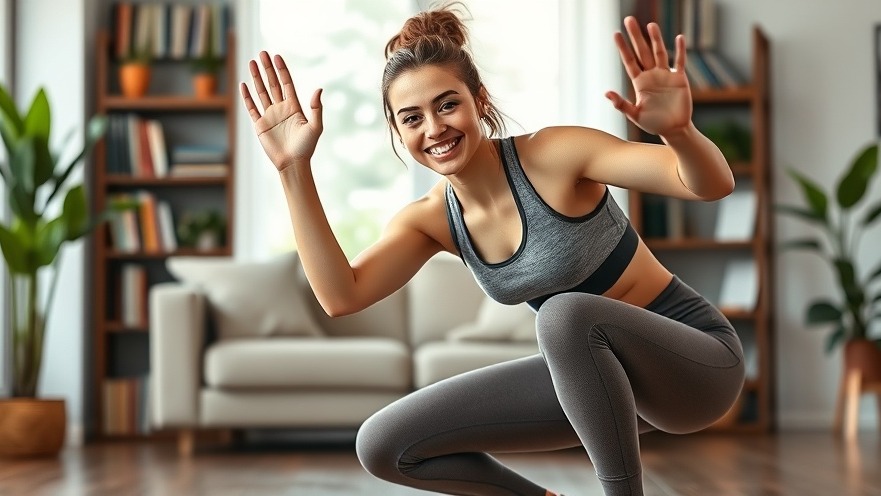
Unlock Your Body’s Potential: Stop Squatting and Start Feeling
In today’s fitness landscape, many workouts have been ingrained into our routines without much thought—squats being a prime example. While squats can be beneficial, the video titled Stop squatting, start feeling your body encourages us to rethink how we approach fitness. It’s about creating a deeper connection with our body and understanding what it truly needs instead of blindly following popular trends. Many adults, regardless of age, are looking for effective ways to get fit that resonate with their personal experiences, and this fresh perspective could be the answer.
In the video titled Stop squatting, start feeling your body, the discussion dives into body awareness in fitness, inspiring us to explore deeper connections beyond traditional exercises.
Why Focusing on Body Awareness Matters
Body awareness is key to improving one’s fitness and overall well-being. When we tune into our bodies, we begin to understand their signals—what feels good and what may lead to discomfort or even injury. This approach enables us to cultivate a more mindful fitness routine. Instead of pushing through traditional exercises, knowing when to modify or skip them may help prevent burnout and injuries.
For example, instead of performing a set of squats focused solely on building strength, consider incorporating movements that are more in tune with how your body feels. These could range from gentle stretching and yoga to engaging in activities that you enjoy, like dancing or hiking. Engaging actively in your fitness journey fosters a more positive relationship with your body.
Practical Exercises to Enhance Body Connection
So, how can we start prioritizing the way we feel over simply checking off exercise goals?
Mindful Breathing: Begin your fitness routine with five minutes of conscious breathing. This helps ground you and connect your mind and body.
Dynamic Flexibility: Consider performing dynamic stretches that promote mobility and coordination, like arm circles and leg swings, to prepare your body for movement.
Listen to Your Limits: As you engage in physical activities, pay attention to your body's signals. If something doesn't feel right, adjust or switch it up.
These simple practices can enhance your connection to your body and improve how you experience fitness.
Social Connection: Celebrating Individual Journeys
Another vital aspect of fitness is the social connection we build through shared experiences. The headlines and fitness trends can often obscure personal journeys. It’s essential to celebrate individual stories and the unique paths we take toward a healthier lifestyle. Group classes that emphasize body positivity and inclusivity can foster a supportive environment for exploring diverse fitness regimens.
Whether participating in group yoga, walking clubs, or online fitness challenges, these spaces can promote camaraderie. Engaging with others who share similar goals enables us to exchange encouragement, tips, and insights, making the journey not just about body transformation but also about emotional and social enrichment.
Future Fitness Trends: Shifting Towards Mindfulness
The future of fitness appears to be leaning more towards practices that prioritize connection, mindfulness, and self-awareness. From popularizing fitness modalities like Pilates to embracing outdoor workout experiences, it’s clear that people are craving methods that don't just enhance physical health but also nourish mental well-being.
This shift trends toward reevaluating traditional workouts and the potential for exploring less structured forms of movement. For many, it's a step away from the pursuit of perfect physiques to an acceptance of fitness as more than just numbers but as an integral part of self-love and care.
Tools and Resources: Making the Journey Easier
There are plenty of resources available to help our exploration of fitness through body awareness. Here are a few helpful tools:
Fitness Apps: Consider using apps that focus not only on calorie tracking but also on mindfulness practices and movement suggestions that align with how you feel.
Online Classes: Seek out platforms that offer classes in yoga, Pilates, or other mindful movement approaches that prioritize body connection.
Books and Podcasts: Explore literature and podcasts that discuss body positivity, mindful fitness, and holistic health approaches.
These tools can inspire and guide you as you create a fitness routine that resonates with your lived experience.
Final Thoughts: Embracing a Healthier Perspective
Ultimately, moving away from mechanical exercises like squats towards a more connective and intuitive understanding of fitness fosters a healthier mindset for adults. By engaging our bodies and minds together, we can create enjoyable and sustainable fitness experiences. So, take a moment to reflect on how your body feels rather than focusing solely on metrics. This nuanced perspective may serve as an empowering catalyst for long-lasting health changes.
If you're ready to deepen your understanding of your body and enhance your fitness journey, consider exploring mindfulness-based exercises that allow you to connect more profoundly with yourself. Let’s celebrate each step towards a more aware and healthy lifestyle!
 Add Row
Add Row  Add
Add 




Write A Comment